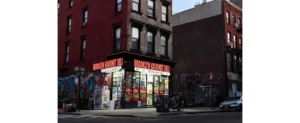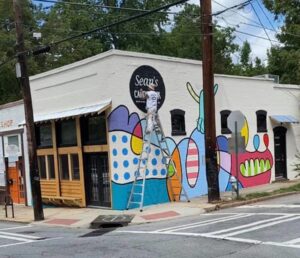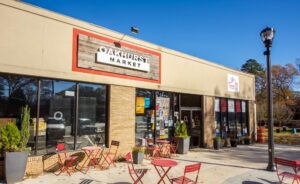 Everyone wants to talk about the Election today.
Everyone wants to talk about the Election today.
I don’t.
Instead, I want to talk about what separates car cities from walking cities. It’s not bike lanes.
It’s the bodega.
New York is filled with bodegas. These are tiny shops stocking small purchases people who walk a lot need to make in their daily lives. Coffee and beer. Lottery tickets and soda. Milk, maybe some groceries. Maybe pastries. In the New York version there are usually two people working, one elevated in front of the more fencable merchandise, often separated from customers by glass, the other running around between the front and the back of the store, maintaining the stock.
 No other American city has bodegas save New York. There’s no business model for them outside New York City. You can’t bring in enough cash from what the bodega sells to justify the cost of real estate and people.
No other American city has bodegas save New York. There’s no business model for them outside New York City. You can’t bring in enough cash from what the bodega sells to justify the cost of real estate and people.
Instead, we have convenience stores or c-stores. Gas pumps in front, a bodega-like place in what used to be the station’s office. Narrow gasoline margins keep the place going, but the profits are in the store, stocked with the sweet-and-salty essentials of American life. On the highways, c-stores can get very large indeed. Buc-ee’s is a c-store.
C-stores serve the 30-minute drive city, not the 15 minute walk or bike one. (Nothing serves bikes.) The function is mostly the same. What’s missing is any sense of community. If the c-store is in an urban setting, you get in-and-out quick because the area’s scruffiest denizens hang out there.
What Would a Modern Bodega Do?

The Korean groceries disappeared because they were serving those scruffy neighbors, the folks who didn’t drive. They sold fortified wine and malt liquor. They sold a lot of lottery tickets. There were cigarettes and cigarillos. One had originally been a grocery, but that section faded away year-by-year. The space it was in was most recently a medical clinic. It now sits empty. A second location is now a bar.
The question becomes, is it possible to recreate the bodega experience in the modern city? The answer is a qualified yes. I’m lucky to have two small groceries near me, one of them a half mile away, the second a little over a mile away. Both sell prepared food and a few groceries. There are seats outside where you can drink your coffee and meet the neighbors. There is parking. A third store, slightly further away, does coffee and sandwiches, some pastry and c-store merchandise. There I see no parking.
The permanent retail recession in our cities is because of online shopping. I have long wondered why there aren’t more small places, like the UPS Store, where you can pick up and drop off packages. The reason is that the merchants want control. I’ve seen a few small “Amazon” shops with some goods stocked in aisles, that serve this trade in cities like San Jose. They don’t do well, largely because the only merchant they’re serving is Amazon.
A Modest Proposal
Someone needs to get out their calculator. What is the population density required to make a corner-of-the-block package store, coffee shop, wine bar, sandwich joint, bodega work? Is it 3,602 people per square mile? Is it more? Is it less? Use this data to create a possible outlet, with coffee, beer, food, seating, bodega things, and package pick-up and delivery. Build a business model and set one up.
Let’s see where this goes.










